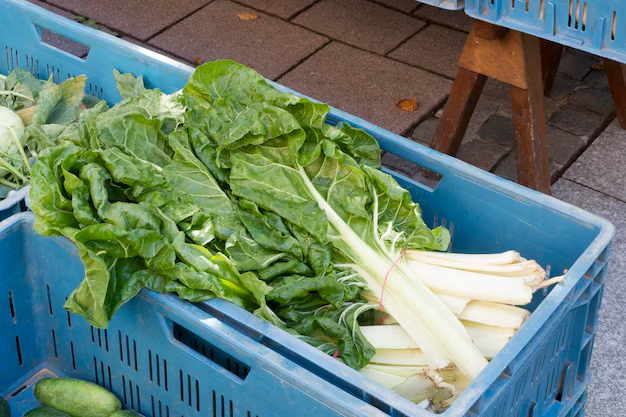How Long Can You Keep Horseradish Fresh in the Fridge?
Whether you love it in dips or alongside a juicy steak, horseradish has a special place in many kitchens. But once you've opened that jar, how long does this pungent condiment last in your refrigerator? Let's dive deep into everything you need to know about storing horseradish to maximize its freshness and flavor.
Understanding Horseradish: The Fiery Condiment
Horseradish is a root vegetable known for its spicy flavor and aroma, which is often used to enhance meats, seafood, and sauces. When you grate horseradish or cut into it, enzymes break down sinigrin-producing allyl isothiocyanate, which gives it that signature kick.
Shelf Life Basics
Knowing how long horseradish stays fresh depends greatly on its form and storage conditions:
- Fresh Horseradish Root: Generally lasts about 2-3 months if stored properly.
- Prepared Horseradish: Once opened, it is best consumed within 3-4 months for optimal flavor.
- Horseradish Sauce: Typically includes additional ingredients and preservatives, extending its lifespan to about 5-6 months after opening.
Storing Horseradish: Tips for Longevity
Storing Fresh Horseradish Root
- Refrigerate Immediately: Wrap the root tightly in plastic wrap or foil to maintain moisture. Store it in the vegetable crisper for the best results.
- Avoid Moisture Overload: While moisture helps, excessive humidity can promote mold. Ensure your fridge isn't too damp.
- Freeze for Longer Storage: If you have excess root, freezing can extend its life. Simply wash, peel, grate, and store it in airtight containers before freezing.
Prepared Horseradish and Sauces
- Tightly Seal After Use: Exposure to air diminishes potency. Ensure jars and bottles are sealed tightly after each use.
- Keep Cool: Store in the refrigerator, ideally at temperatures between 33-40°F (0.5-4°C) to slow down degradation.
- Use Clean Utensils: Prevent contamination by using clean spoons or knives when serving.
Signs Your Horseradish Has Expired
It's crucial to recognize when horseradish is no longer good. Here are some tell-tale signs:
- Change in Color: Fresh horseradish should be creamy white. Browning indicates loss of freshness.
- Off Smell: Horseradish should smell pungent, but not musty or sour.
- Texture Alteration: Lumpiness, separation of liquids, or an overly soft texture are indicators it has gone bad.
Practical Storage Summary 🗂️
Here's a handy guide to keeping horseradish fresh:
- 🥕 Fresh Root: 2-3 months in fridge crisper
- 🧴 Prepared Horseradish: 3-4 months after opening in the fridge
- 🥄 Horseradish Sauce: 5-6 months in the fridge after opening
- 💡 Tips: Tightly wrap fresh root, tightly seal jars, and monitor temperature
Extending Shelf Life: Can You Freeze Horseradish?
Freezing Horseradish
Freezing is a viable option for preserving both fresh and prepared horseradish:
- Grated Fresh Root: Once grated, pack the horseradish tightly into freezer-safe bags or containers, removing as much air as possible.
- Thawing and Usage: When needed, grate or scoop directly from frozen – it shouldn't need to be thawed beforehand.
Is Freezing Always Ideal?
While freezing extends life, texture changes can occur. Thawed horseradish may be softer and slightly less pungent. Use it in cooked dishes where texture is less critical.
Serving and Culinary Uses
Horseradish's intense flavor can transform dishes, making it a versatile kitchen staple.
Classic Pairings
- Prime Rib or Roast Beef: A match made in culinary heaven.
- Seafood: Particularly shellfish like shrimp and clams benefit from a horseradish kick.
- Dressings and Sauces: Mix it into mayonnaise or yogurt for a zesty sauce.
Creative Twists
- Veggie Dip: Blend with sour cream or Greek yogurt for a quick dip.
- Spicy Mashed Potatoes: Incorporate in mashed potatoes for a unique side dish.
- Horseradish Butter: Whip into softened butter for flavorful breads and steaks.
Why Proper Storage Matters
Preserving Potency
Horseradish loses its punch over time, and correct storage helps maintain that bite essential for culinary applications.
Safety Considerations
Like any perishable item, storing horseradish properly reduces the risk of mold and bacteria, keeping it safe for consumption.
When in Doubt: Replace
If you question the integrity of your horseradish, it's safest to replace it. The quality of ingredients directly affects both taste and health.
Wrapping Up: The Cycle of Freshness
Storing horseradish effectively is more than just about keeping it fresh; it's about retaining its signature zing that elevates your meals. With this guide, you're well-equipped to ensure your horseradish contributes flavor at its finest.
Key Takeaways:
- ⚡ Quick Freshness Check: Look, smell, and feel.
- 🌿 Environment Control: Cool, dry, and tightly sealed.
- 🔄 Rotate and Replace: Keep an eye on shelf life for peak use.
Remember, the next time you reach for that horseradish in your fridge, you'll know exactly how to make it last and ensure it's in top shape for your culinary endeavors. 🥂
